'Expressive with their eye stalks': The art of raising happy snails at Singapore’s first such commercial farm
With 40,000 snails under its care - and more to come - the WholeSnail firm aims to produce mucin for beauty products and escargot for consumption by mid-2025.
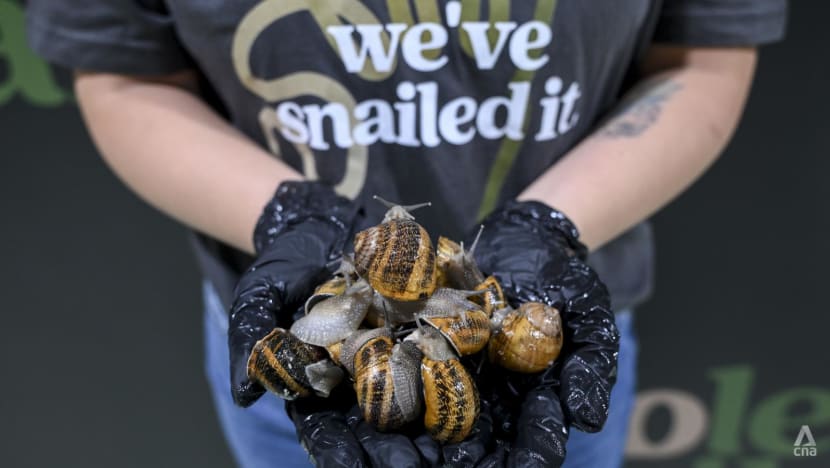
Founder of WholeSnail Stephanie Kudus holding a cluster of European garden snails. (Photo: CNA/Wallace Woon)

This audio is generated by an AI tool.
SINGAPORE: They are hard creatures to read, but the hundreds of snails milling about an indoor facility west of Singapore appeared to be enjoying their surroundings.
Clustered on a 1m by 1m wooden tower structure, with what looked like a charcuterie board in the middle, they chewed on feed and mingled in sticky knots.
In fact, at least two pairs of the gastropods were mating - an incident so rare that their owner Stephanie Kudus momentarily paused this December interview to call for her team members.
The 35-year-old is the founder of Singapore's first commercial snail farm, WholeSnail.
Unlike the slow-going mollusc it's named after, the year-old company is steaming ahead with a goal in mind: Producing its first batch of cosmeceutical-grade snail slime and ready-to-eat escargot for the local market, by mid-2025.

Ms Kudus leads a small team of fewer than 10 members, who are all intimately involved in the operations of their unconventional farm.
Under their charge are about 40,000 snails in a temperature-controlled environment.
They want to scale that population to 2.2 million, to ensure a consistent supply of either snails as food or the mucus secreted by the creatures known as mucin, depending on market demands.
Snail mucin is a popular ingredient in skin care products, and is touted for its healing and anti-aging properties.
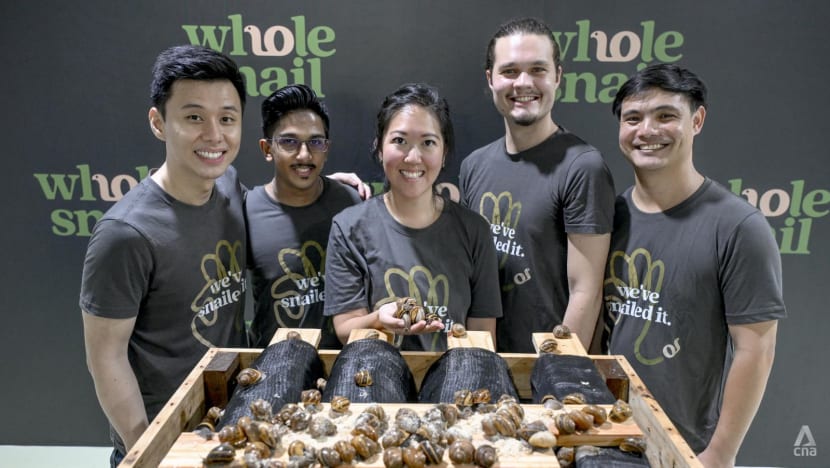
WHY SNAILS?
The star of the WholeSnail show is the garden variant known as cornu aspersum and native to the Mediterranean regions of Europe and Africa.
This species grows up to 18g in size, and is smaller than the typical African land type commonly found in Singapore gardens - and on walkways - which can grow up to 500g.
The former is also a globally established delicacy while the latter is not typically eaten as escargot, said Ms Kudus.
"There is a premium to these snails. You will not find them everywhere. You will definitely not find them in your garden," the Singaporean added.
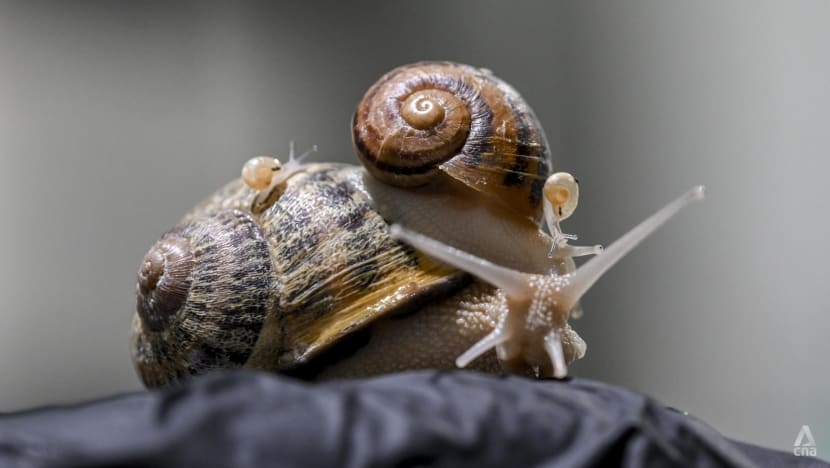
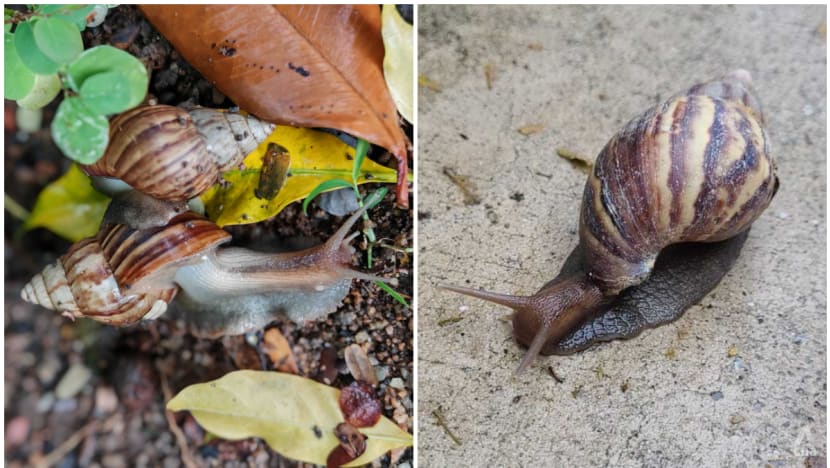
WholeSnail's particular crop is from Italy, where the team also spent some time observing and getting involved with how the molluscs were farmed.
The next step was to figure out how to adapt the snails to Singapore's highly humid climate - hence an adjustable indoor environment, which also serves to keep them away from the local ecosystem.
Not that the snails ever have a shot at escaping.
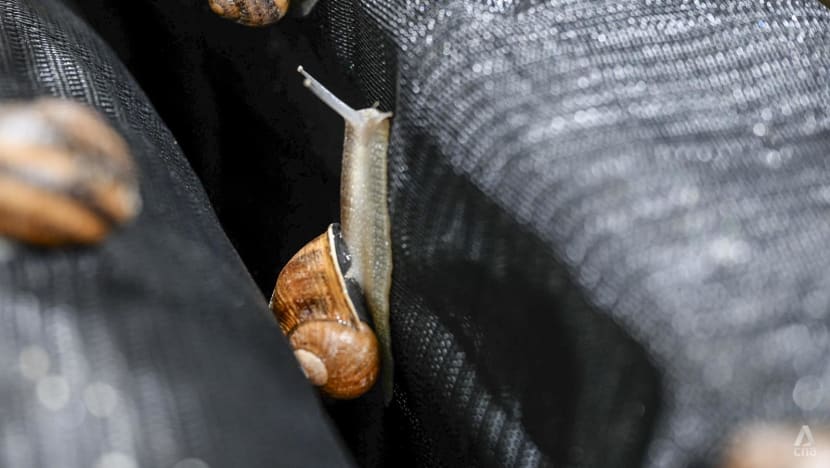
"I knew that when we started, they would never outrun us. A chicken could outrun me. So in a way, this is also part of why we chose snails," said Ms Kudus, half-joking.
"I decided that snails were an ideal choice: Delicious to eat, won’t make me run, won’t make loud sounds, and are less active at night - which means I could tend to them during my daytime."
Still, the team is not taking any chances. As a precaution against adventurous snails, the borders of their wooden tower homes are lined with tablets of salt - which can dehydrate and kill the gastropods.
WholeSnail has capacity for at least 90 of these towers capable of holding more than 1,000 snails each.
Like a puzzle piece, a tower comprises four modular layers that can be moved around; with each layer having two levels of its own.
A black netting threaded through wooden slats at the top level helps snails navigate the two storeys.
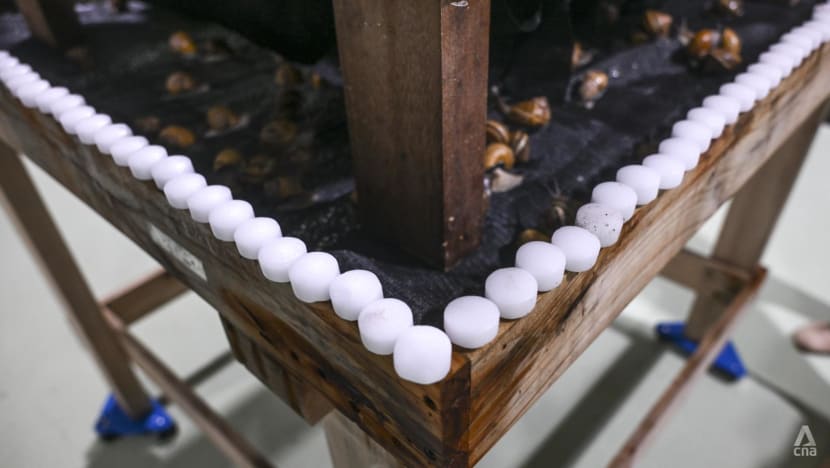
SIGNS OF HAPPINESS
Most people would imagine it as challenging to decipher if a snail, transplanted from European nature to a Singaporean industrial estate, are comfortable in its new environs.
Not for WholeSnail's invertebrate research and development manager Nathan Laurenz.
"They're very expressive with their eye stalks and their little tentacles down here," said the 25-year-old, pointing to an area near the snail's mouth.
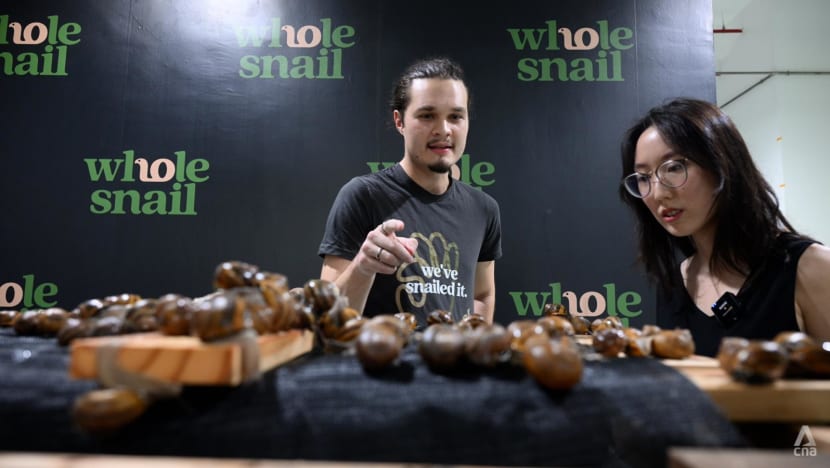
The amount of food and water consumed, their movement patterns and even colour are also indicators of a snail's health.
WholeSnail's residents are given a plant-based feed that is formulated in-house and tweaked over time.
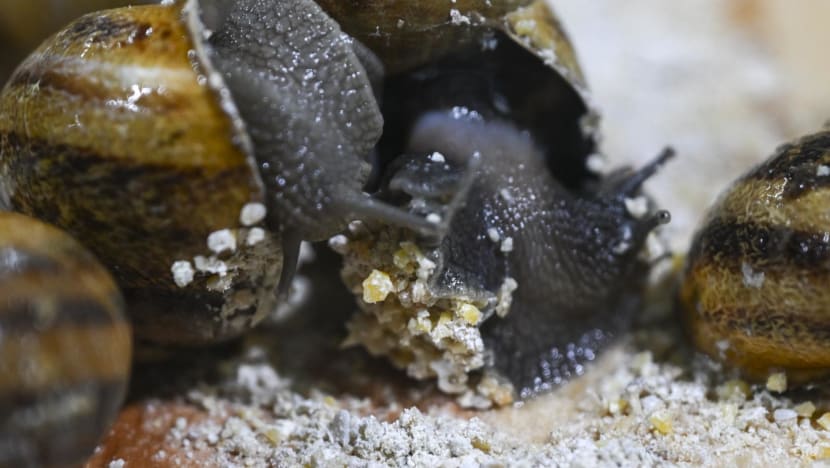
"These are things that we have had to learn along the way. Traditional snail farming, is very, very intuitive," said Ms Kudus, though she added that WholeSnail is also trying to bring a data-driven approach to its operations.
"In the beginning, it's tough. We build all of our prototypes in-house, because there's no playbook for snails out there."
Her team has even played music for the snails, which are deaf but can feel vibrations.
Ms Kudus was also keen to dish out fun facts about the invertebrates, including the number of teeth they have – that's 14,000, arranged in a semi-circle structure called a radula.
And then there are the different types of slime they secrete.
One coats the bottom of the body to help them glide. Another helps it adhere to surfaces; yet another is used for defence.
"When you make them mad, they secrete defensive slime and it forms a sticky barrier to deter predators," said Mr Laurenz, who's actually an entomologist or insect scientist by training.
There's also slime with pheromones, for mating.
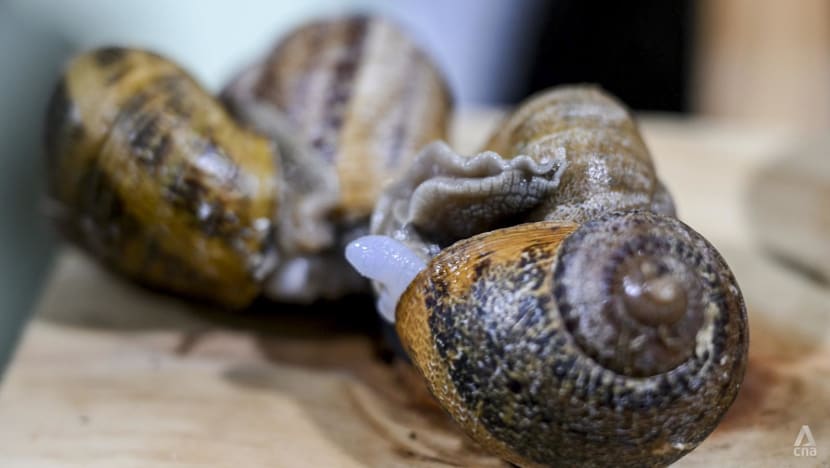
This slime has aphrodisiac qualities and it coats calcium spears produced by snails, which are hermaphrodites.
The spears - also called "love darts" according to Mr Laurenz - are then launched at targets to inform them the shooter is ready for mating, in a more violent version of Cupid's arrow.
"The darts are sometimes absorbed by the snail as a little calcium gift, but often they just fall out of the snail," said Mr Laurenz, who keeps a small jar of darts or what he called "really really cool structures".
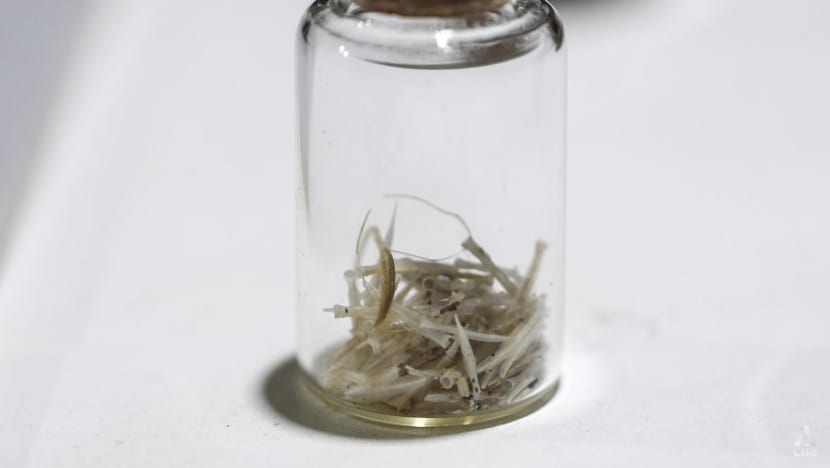
Mating behaviour is yet another sign that WholeSnail is doing right by its inhabitants – and it follows that egg-laying is as well.
Just a few weeks into its pioneer batch of imports, the team was surprised by a first clutch of eggs, which Ms Kudus described as a pivotal moment.
They were found buried within a substrate - a substance similar to soil - which WholeSnail also formulated on its own. Egg-laying snails typically burrow into soil to nest.
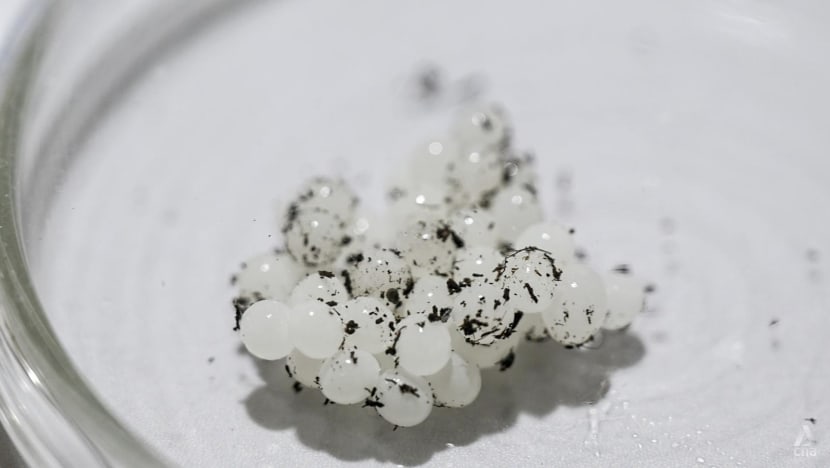
A snail can lay about 200 eggs, each of which weighs as heavy as a grain of rice.
They hatch into tiny, semi-translucent hatchlings which double in size every few days in the early stages.
These delicate babies require tweezers to handle and a very precise scale to measure their weight.
Each snail will develop unique markings as it grows. They will mature within a year, and can live up to five years or more.
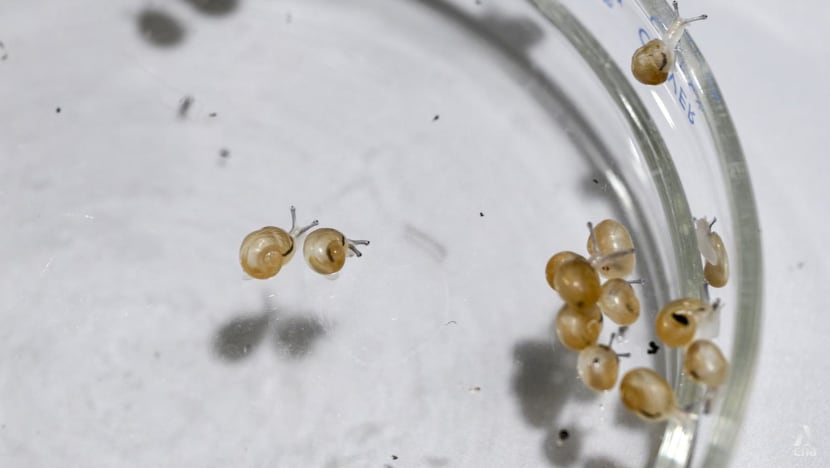
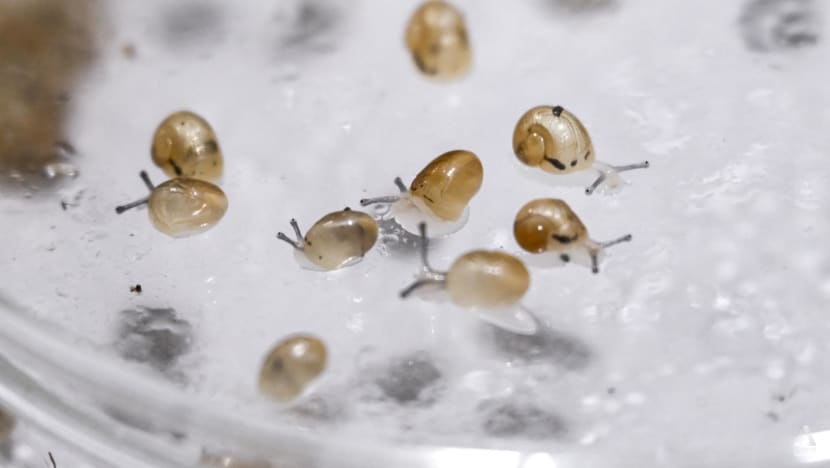
Thanks to its unexpected feat of husbandry, WholeSnail is now into its second generation of snails, around six months since its initial shipment arrived in Singapore.
The team said it controls the population by reducing the temperature so the snails go into hibernation.
They do so by shrinking into their shells and packing a hard layer of slime at the opening - called an epiphragm - to seal in moisture and nutrients.
With this, WholeSnail can press pause on any further reproduction - and even slow down ageing - for a few months at least.
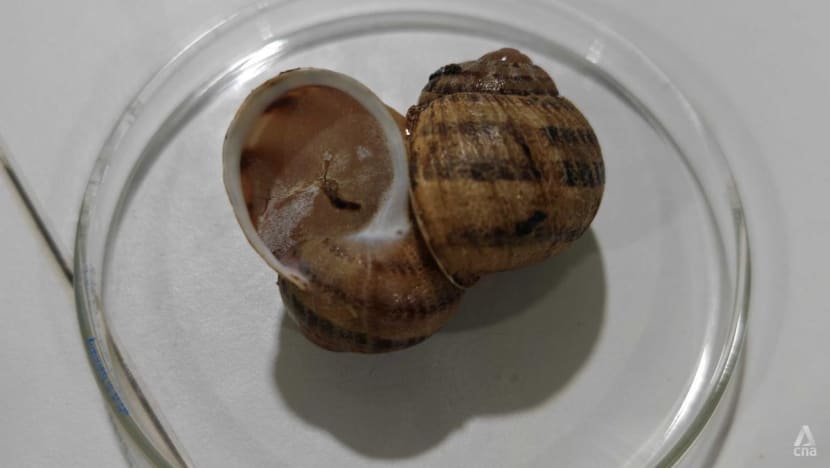
BLAZING A TRAIL
WholeSnail is looking to focus production on snail mucin for cosmeceutical companies. Escargot, and potentially snail eggs, will be by-products, though the mix will be optimised according to market demand.
The firm has raised S$1.3 million (US$957,000) in funding, of which about a quarter has been tapped.
In February, it will kick off trials for harvesting snail slime, centred around a device called a dome. This sets a temperature for the molluscs to secrete their sauce, which is then collected at the bottom and micro-filtrated, said Ms Kudus.
As an unconventional farm, WholeSnail is somewhat less affected by the hurdles faced by other urban farmers in Singapore.
Some have struggled to stay afloat, citing escalating costs of labour and energy. Others have called it quits in recent years.
This despite the government's heavy investment in the agriculture industry - including a S$60 million fund to encourage technology adoption - in line with a goal to produce 30 per cent of nutritional needs locally by 2030.
"We have fundamentally been different since day one ... We are not a high-tech farm," said Ms Kudus said, gesturing to wooden towers in the facility which the team built themselves.
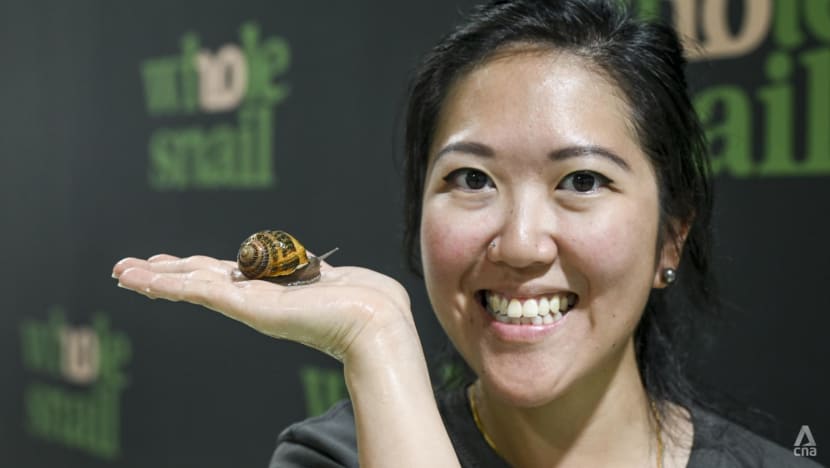
WholeSnail's biggest expenditure has been on manpower and rent. Yet unlike regular livestock, snails don't require an abundance of space.
Snails are also not a new source of alternative protein, Ms Kudus pointed out.
"Snails have a long track record of being consumed as food internationally, and there are also ongoing imports of processed snails as food in Singapore," said the Singapore Food Agency (SFA).
Escargot can already be found in supermarkets here, where they are typically sold frozen in trays or processed in cans.
The trays usually come with a garlic butter spread and only have to be reheated before consumption. These can range from S$17 to S$26.
WholeSnail hopes to beat this price point. The team is also exploring other forms of packaging, such as individually wrapped pieces to use without having to defrost a whole batch.
The company is also looking to target gourmet restaurants and distributors with its first small batch of ready-to-eat escargot.
It will not, however, be selling live snails to chefs, said Ms Kudus, citing biosecurity concerns and how snails are an invasive species.
WholeSnail can work with chefs to process snails to their liking, though. And when it goes down that path, it will have to be licensed like any other food establishment.
"However, snails for human consumption must be cooked or heat-treated at a licensed food processing establishment, and not sold raw," said an SFA spokesperson. "They must comply with regulatory limits under the food regulations, including microbiological standards for ready-to-eat food."
This will be an eventual step for WholeSnail as it inches towards its business milestones.
And as the team tries different ways and learns on the job to figure out what works, the aim is to keep raising happy snails, said Ms Kudus. "That's all that we ever want."


















